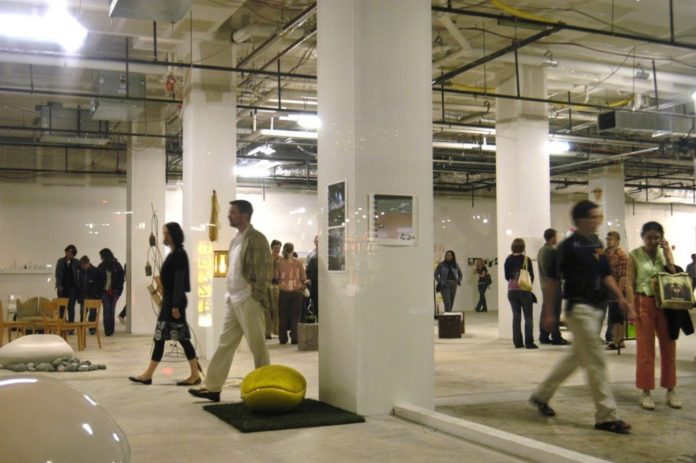
Sound Session has become the city’s largest cultural event of the summer. It drew 35,000 visitors last year, and Don King, director of the Providence Black Repertory Company, said for this year’s festival, July 15-21, he expects more.
The “genre-defying” event will feature 25 percent more performances this year and more participating venues, including Tazza Caffe, AS220 and The Living Room.
But King says it could be even bigger. For example, there are 4,000 masqueraders and performers and a hundred musicians who participate in Berlin’s four-day summer Carnival of Cultures festival, which draws nearly 400,000 spectators.
“This is my model,” King said. “This is what we want to see happening in Rhode Island.”
Providence isn’t there yet, but a study unveiled last week ranks it second in the nation for cities of 100,000 to 249,999 residents, after Pasadena, Calif., for the economic impact of its arts and culture industry.
The city’s nonprofit art and cultural organizations and audiences spent $111.8 million in 2005, according to the Americans for the Arts study, which Mayor David N. Cicilline released last Thursday at a breakfast attended by major arts and business stakeholders in the community.
The study based its calculations on an analysis of financial and attendance information from 38 nonprofit organizations, including the Black Rep, the Trinity Repertory Company, the Providence Performing Arts Center, the Festival Ballet, AS220, Gallery Night Providence, the Rhode Island International Film Festival, the Rhode Island Philharmonic Orchestra, WaterFire, the Rhode Island School of Design Museum of Art, and others.
In addition to Providence, the study looked at 155 other communities in all 50 states.
In terms of employment, Providence ranked third, after Pasadena and Orlando, with 2,759 full-time jobs in the industry. It was also third after those two cities for the $55.6 million in household income the industry creates. And it was second, again to Pasadena, in terms of the $11 million in revenue the industry provides local and state government.
“I think it’s always been very clear to people that the arts and culture in the city have been really important to the quality of life in Providence,” Cicilline said. “What this study does is say that in addition to that, it’s a hugely important part of our city’s economy – that investments people make, the support people provide to arts and cultural organizations, translates into a strong economy.”
Cicilline said he set up the Providence Department of Art, Culture and Tourism as a cabinet-level office so that it would bring together the city’s scattered organizations relating to arts and culture and leverage partnerships with those organizations to maximize the resources devoted to the arts.
Since then, the department has partnered with arts organizations such as Black Rep to co-produce Sound Session. The city has allocated $65,000 in grants to the festival since it started in 2004. And the department has supported the creation of festivals such as FirstWorks.
“The study confirms this investment is paying off,” said Lynne McCormack, director of the department. “The challenge is sustaining it.”
Over time, the funding priorities of foundations, corporations and individuals shift, she said. McCormack hopes the results of the study show them the importance of giving to nonprofit arts and cultural organizations as an investment in an industry that gives back $111.8 million to the city’s economy, as opposed to charitable giving that ends up in a “black hole.”
James V. DeRentis, executive vice president and chief business officer for Bank Rhode Island and chairman of the Arts & Business Council of Rhode Island, noted that the study shows more than 2.5 million people attended arts and cultural events in the city in 2005.
“By supporting those arts and cultural organizations, the stakeholders now have an opportunity to reach these people,” he said.
McCormack said she thinks nonprofit arts and cultural organizations in the city could definitely leverage the information in the study to get more funding.
King agrees. Large donors are driven by numbers, he said. The more numbers they see or the more proof an organization can provide that suggests investing in an event is a sound investment, the better the chances are of receiving funding.
Curt Columbus, artistic director of the Trinity Rep, said it is important for people to understand that about 35 to 45 percent of Trinity’s budget comes from “unearned income,” or donations.
“We need to be better coordinated as an arts community,” he said. “We must have programs that are in dialogue with one another.”
That kind of dialogue could result in new events that attract more visitors to downtown, thus enhancing the fiscal impact on the economy.
It’s already apparent that the arts and cultural events and venues drive business to the hotels, restaurants and retail stores downtown, thus attracting more investment in developing hotels and opening businesses.
The Renaissance Providence Hotel, for example, “would not be taking place without a vibrant arts and cultural community,” DeRentis said.
And the fact that the Renaissance has branded itself as an arts hotel, McCormack said, is testament to the power of the city’s identity in attracting developments of its scale to the city.
“I think the study confirms we are an arts destination,” she said.
Cicilline said he hopes the study encourages people to continue to support the arts and cultural organizations, because they are “the reason people want to live and visit the city.”
“There’s no question about it,” he said.











